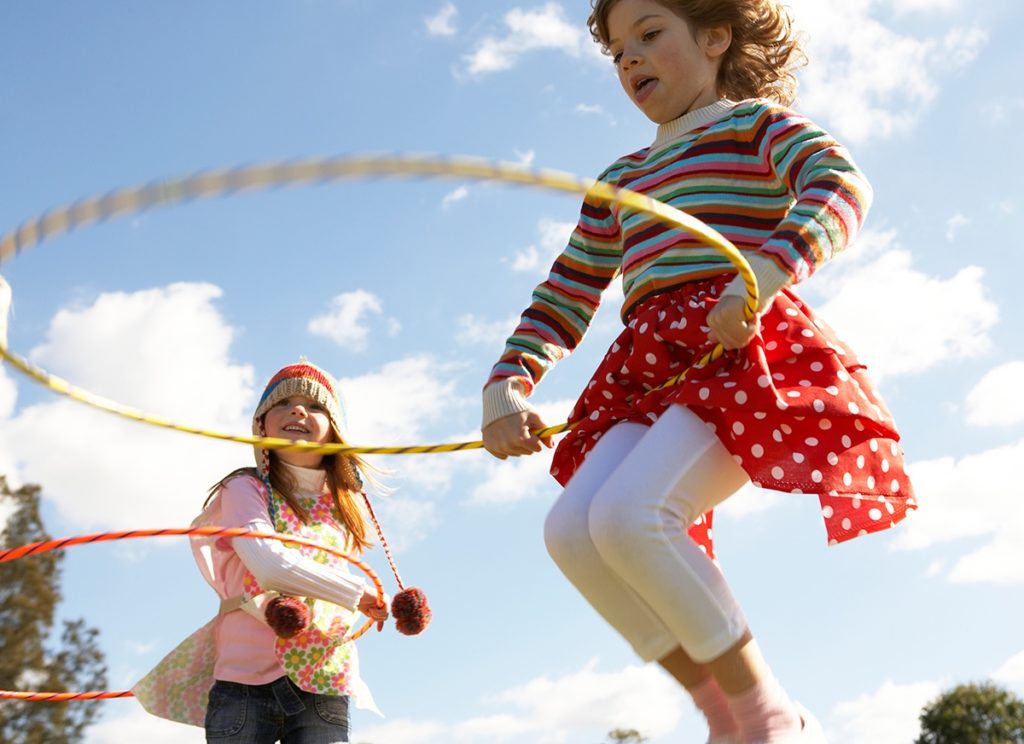Is your school recess active enough?
Recess is a great way to get kids active during the school day, and it has many benefits. School recess has been proven to:
- Increase the amount of physical activity students get each day
- Improve memory, attention, and concentration
- Help students stay on-task in the classroom
- Reduce disruptive behavior in the classroom
- Improve social and emotional development (e.g., learning how to share and negotiate)

But simply putting recess on the schedule doesn’t guarantee that students are activeduring this time each day. School administrators, teachers, support staff, parent volunteers, and others can take simple steps to encourage physical activity during recess:
Create policies that protect recess and physical activity.
Create school-wide policies that adhere to national guidelines for active recess. These should include:
- Recess will not be taken away from students who display unwanted behavior or low academic performance in the classroom.
- Physical activity will not be used during recess as a punishment (e.g., making students run laps).
Designate indoor space and activity guidelines for inclement weather.
Don’t let wind chill factors, thunderstorms, and other adverse conditions become an excuse for sedentary recesses. Plan ahead by identifying indoor space such as a gymnasium, cafeteria, unused classroom, activity room, and/or hallways that can be used for physical activity during recess time. Store indoor recreational equipment together in convenient locations for teachers to access. Consider including yoga or other fitness DVDs. Brainstorm with staff and students to create a binder full of easily implemented indoor physical activity ideas.
Provide adequate physical activity equipment.
Examples include balls, hula hoops, flying discs, fabric tunnels, jump ropes, and beanbags. Schools should choose equipment that meets the developmental needs of a variety of students, including items that students with varying abilities and disabilities can use. Equipment should be plentiful enough to allow students a number of choices.
Add markings to playground or physical activity areas.
Markings increase students’ physical activity levels during recess. Schools can paint surfaces with lines for recreational games (e.g., four square, hopscotch, beanbag toss, number grid) or traditional sports (e.g., basketball, soccer, volleyball). Schools can also have art teachers, community artists, or companies paint murals (e.g., mazes, castles, scenes) that spark active imaginative play.

Provide planned activities or activity cards.
In addition to playgrounds and recreational equipment, schools can provide opportunities for group exercise, sports activities or games, or self-directed physical activity during recess. A variety of options are key here, too. Activity cards can help kids work alone or in small groups to find and facilitate their own physical activity. Download a list of activities specifically geared towards tweens ages 9-13.
Provide recess staff with ongoing professional development in this area.
School recess supervisors should have specific roles and responsibilities. They may be trained on established rules, protocols, and expectations for staff and students. They can learn strategies and activities for recess, such as how to use activity zones and play equipment. They should be trained to identify students with specific medical conditions and limitations, deal with medical emergencies, engage students in physical activity, and promote positive behaviors during recess.
Sources: CDC and SHAPE America’s Strategies for Recess in Schools; Active Living Research’s Increasing Physical Activity through Recess.
More ways to get active in school
Ensuring that students have opportunities for physical play at recess is one way schools can support student wellness and academic achievement. Find out what else innovative schools are doing to get students active and boost their brain power in our guide, Active Students Achieve More.

Topics: Physical Activity, Schools
Subscribe for more
Want more ideas for healthy schools, workplaces, child care providers, and families? Subscribe to our blog for weekly tips delivered right to your inbox!
Employee wellness program idea: stock a healthy break room NEXT »
Take the stairs for workplace wellness
